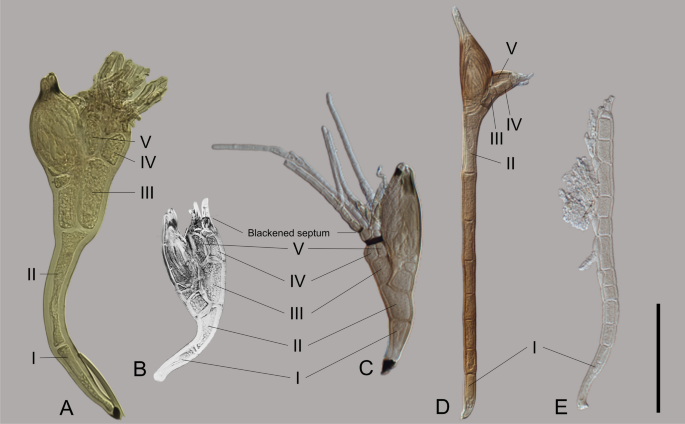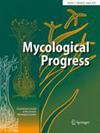Botryandromyces, a morphology-based genus concept scrutinized by molecular data
IF 3
3区 生物学
Q3 MYCOLOGY
引用次数: 0
Abstract
Abstract Laboulbeniales ( Ascomycota ) are an order of understudied, biotrophic microfungi uniquely associated with arthropods. More than 2300 species are described but only a fraction of those have been sequenced. Molecular studies have shown that cryptic diversity and phenotypic plasticity are present within the Laboulbeniales . Thus far, all of the 146 genera described in Laboulbeniales have been based on morphological characteristics; features commonly used to delineate genera are the organization of receptacle cells and the number of perithecial outer wall cells. The genus Botryandromyces was erected to accommodate two species, B. heteroceri and B. ornatus (type), which share similar morphological characteristics and are different from other genera in their number of perithecial outer wall cells. Here, we generated sequences of multiple loci (18S, ITS, and 28S) of B. heteroceri and several Laboulbenia species. Our phylogenetic analyses retrieved Botryandromyces within Laboulbenia with high support. The two Botryandromyces species are similar to related Laboulbenia species in their upper receptacle (i.e., cells IV and V). We propose to transfer Botryandromyces ornatus and B. heteroceri to Laboulbenia as L. heteroceri and L. mairei nom. nov., respectively, due to a complicated taxonomic history. These results advocate the use of molecular data and the necessity of an integrative taxonomy approach in the study of Laboulbeniales not only to delineate species, but also to investigate relationships among species, genera, and higher taxa as well as to understand the evolution of morphology in this group of fungi.

Botryandromyces,一个基于形态学的属概念,由分子数据审查
Laboulbeniales(子囊菌门)是一个与节肢动物相关的生物营养微真菌目,研究尚未充分。超过2300个物种被描述,但只有一小部分被测序。分子研究表明,Laboulbeniales存在着隐多样性和表型可塑性。迄今为止,Laboulbeniales中所描述的146个属都是基于形态学特征;通常用来划分属的特征是花托细胞的组织和周外壁细胞的数量。Botryandromyces属的建立是为了容纳两个物种,B. heteroceri和B. ornatus(型),它们具有相似的形态特征,但在表皮外壁细胞的数量上与其他属不同。在这里,我们生成了B. heteroceri和Laboulbenia几个物种的多个位点(18S, ITS和28S)序列。我们的系统发育分析在Laboulbenia中获得了高支持度的botryandroomyces。这两种Botryandromyces在上托(即细胞IV和V)上与Laboulbenia的亲缘种相似。由于其复杂的分类历史,我们建议将Botryandromyces ornatus和B. heteroceri分别转移到Laboulbenia为L. heteroceri和L. mairei nom. nov.。这些结果表明,在Laboulbeniales的研究中,不仅需要使用分子数据和综合分类学方法来描述物种,而且还需要研究种、属和高级分类群之间的关系,并了解该真菌群的形态进化。
本文章由计算机程序翻译,如有差异,请以英文原文为准。
求助全文
约1分钟内获得全文
求助全文
来源期刊

Mycological Progress
生物-真菌学
CiteScore
4.50
自引率
8.30%
发文量
94
审稿时长
6-12 weeks
期刊介绍:
Mycological Progress publishes papers on all aspects of fungi, including lichens. While Review Papers are highly welcome, the main focus is on Research Articles on
Taxonomy and Systematics
Evolution
Cell Biology
Ecology
Biotechnology
Pathology (plants, animals, humans)
Manuscripts on current methods applied in, e.g., morphology, anatomy, ultrastructure (TEM, SEM), genetics, molecular biology, chemistry, and physiology will also be considered.
 求助内容:
求助内容: 应助结果提醒方式:
应助结果提醒方式:


